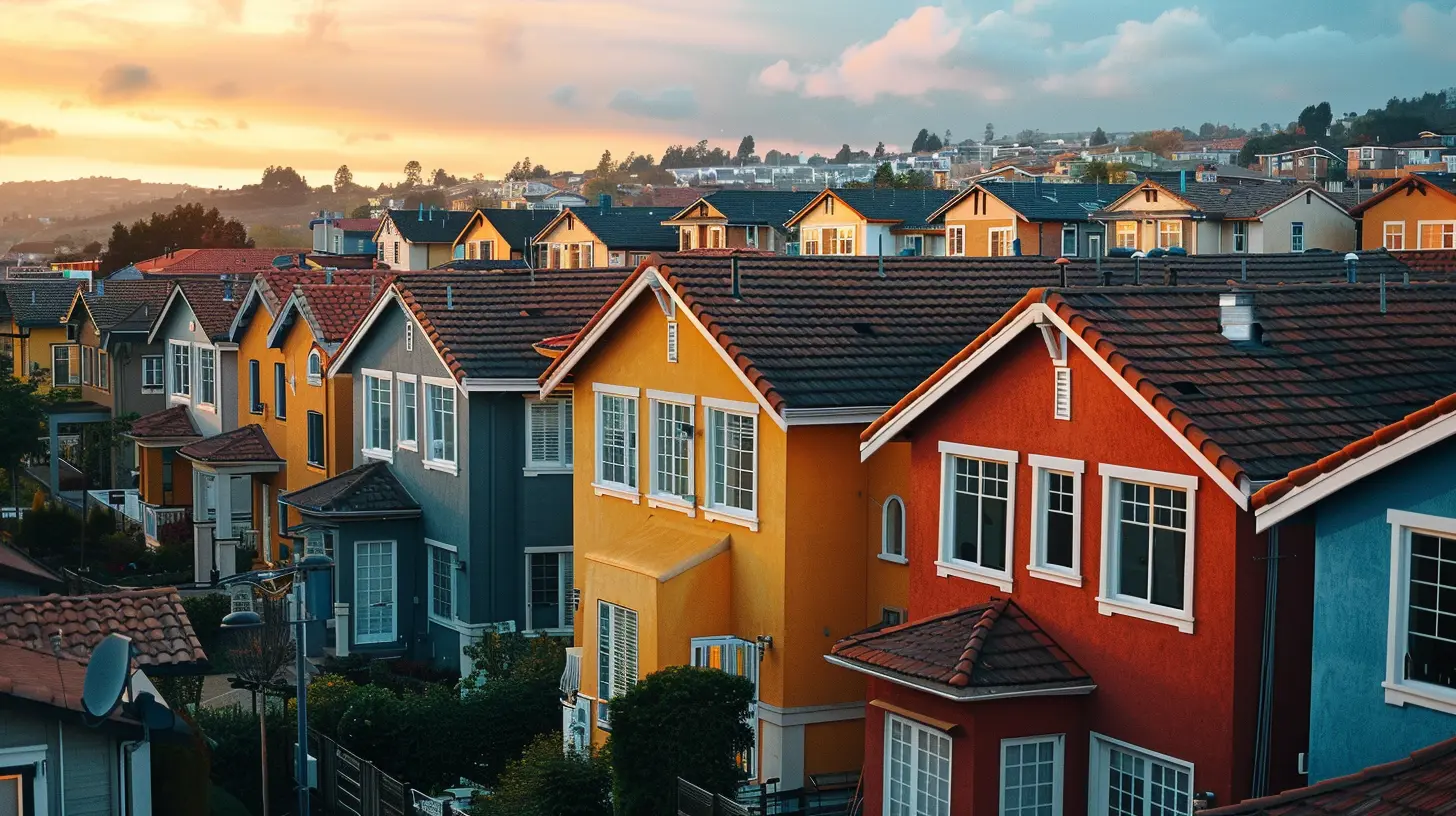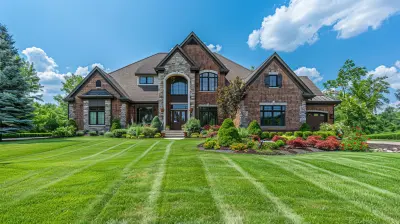The Future of Affordable Housing in High-Cost Metropolitan Areas
22 November 2025
Let’s face it — living in high-cost cities like New York, San Francisco, or Los Angeles can feel like you're constantly running on a treadmill that's speeding up… and the finish line keeps moving. With rents spiking and home prices soaring through the roof, affordable housing has become a real hot topic. But here's the thing: despite all the doom and gloom, there’s actual hope on the horizon.
So, what does the future of affordable housing in high-cost metro areas really look like? And more importantly—how do we make it work? Let’s break it down.
What’s Going Wrong: Why Affordable Housing Feels Impossible
Before dreaming about the future, let’s talk about what’s broken now.Sky-High Demand, Rock-Bottom Supply
Ever notice how everyone wants to live in the same handful of cities? These metro areas offer job opportunities, cultural richness, and urban convenience. The problem? There’s just not enough housing to go around. It's a classic case of demand outpacing supply.Construction Costs Are Through the Roof
Building homes isn’t cheap—especially in big cities. Land is expensive, labor is costly, and materials? Those prices keep rising. Developers often focus on luxury housing simply because it gives them better returns.Zoning Laws That Block Progress
You’d think cities would be doing everything they can to encourage more housing, right? Not always. Outdated zoning laws, height restrictions, and NIMBY (Not In My Back Yard) attitudes tend to cut off affordable housing options before they even start.
What’s Being Done Right Now?
Some cities aren’t just sitting around. They’re rolling up their sleeves and giving affordable housing a much-needed boost.Inclusionary Zoning & Incentives
Some cities are making it a rule: if you’re building a big complex, a percentage has to be affordable. Others offer perks like tax breaks or extra building height in exchange for cheaper units. It’s kind of like a real estate barter system.Public-Private Partnerships
Think of this as teaming up on steroids. Governments are partnering with developers, nonprofits, and even tech companies to build mixed-income housing. Everyone brings something to the table, and the result is often more affordable homes for those who need them.Modular Housing & 3D Printing
Innovation is sneaking into the construction world. Modular homes (think Lego pieces snapped together) and 3D-printed buildings are becoming more viable. They cost less, go up faster, and could revolutionize the way we think about housing.
The Future Is Affordable — If We Play It Smart
Okay, so what does the next decade look like? Here's what the future of affordable housing in expensive cities might actually include.1. Micro-Units: Downsizing Without Downgrading
Living small is becoming a big thing. Micro-units—tiny but highly functional studios—are popping up in urban centers. These spaces are carefully designed to make the most out of every square foot. Think Murphy beds, fold-out desks, and shared amenities that take the pressure off your personal space.2. Upzoning: Going Up Instead of Spreading Out
Cities are starting to realize: if you can’t build outward, build upward. Upzoning allows taller and denser buildings in areas that were previously locked into single-family homes. This increases housing stock without expanding the city’s footprint.3. Adaptive Reuse: Turning Offices into Homes
With the rise of remote work, some office buildings are sitting half-empty. Why not turn them into housing? It’s cheaper than starting from scratch, and it keeps buildings useful. If you’ve ever dreamed of living in a converted skyscraper—this could be your time.4. Rent-to-Own Models
Renting forever can be exhausting, especially when ownership feels so far out of reach. New rent-to-own housing models are making a comeback, giving renters the chance to build equity over time instead of just paying rent into a black hole.5. Land Trusts & Community Ownership
Here’s a powerful idea: what if communities could actually own the land under their feet? Community land trusts are nonprofit organizations that keep ownership of the land and sell/rent homes at below-market rates. It's about building housing stability that lasts.
The Role of Technology in Affordable Housing
Let’s not underestimate the power of tech. It's already shaking things up and could hold the key to long-term solutions.PropTech to the Rescue
From apps that help renters find low-income housing to AI tools helping developers identify underused land, PropTech (property technology) is transforming how we navigate the housing space.Blockchain for Transparent Housing Deals
Blockchain could make buying and renting more transparent—and less costly. Imagine cutting out the middlemen and legal red tape. That’s not a distant fantasy; it’s already being piloted in some housing markets.Government’s Role: Still the MVP
Let’s be real: private developers can’t fix this alone.Increased Funding for HUD and Local Programs
More funding is key. The Department of Housing and Urban Development (HUD) and local housing authorities need bigger budgets to support vouchers, subsidies, and development.Streamlining Bureaucracy
A big issue? Red tape. Developers and nonprofits face endless delays. Streamlining the approval process can accelerate the construction of affordable housing and remove unnecessary roadblocks.Challenges That Aren’t Going Away (But Can Be Tackled)
We can get starry-eyed about the future, but it's best to stay grounded.Gentrification vs. Revitalization
There’s a thin line between improving a neighborhood and pricing out its residents. Ensuring long-lasting affordability means putting safeguards in place—like rent caps and homeowner protections.Climate Change Construction
Rising temperatures and sea levels can’t be ignored. Building affordable housing near flood zones or in wildfire-prone areas is risky. The future demands eco-friendly and resilient designs. Think solar panels, green roofs, and materials that can weather the storm—literally.The Mindset Shift We Really Need
If there’s one thing that could really turn the tide, it’s changing how we think about affordable housing.It’s Not Just for “Other People”
Let’s drop the stigma. Teachers, nurses, delivery drivers, young professionals—they all need affordable homes. It’s not just about housing the poor; it’s about keeping cities vibrant and functional.Housing as a Human Right
The boldest future? One where we treat housing not as a luxury or investment—but a basic human right. When policymakers, developers, and everyday people rally around this idea, real change follows.So Where Do We Go From Here?
If you’re imagining a future where cities are affordable, livable, and still thriving—you’re not dreaming. It’s possible, but it’s not going to happen by accident. It’ll take smart policies, innovative design, public will, and a whole lot of collaboration.The good news? We’re already taking steps in the right direction. The train is moving. The only question is: are we all willing to hop on board?
Final Thoughts
Affordable housing in high-cost metropolitan areas isn’t some pie-in-the-sky dream. It's a future we can build—literally. With fresh ideas, better policy, and a little tech magic, we can make city living viable for everyone—not just the top 1%.In the end, it’s not just about bricks and mortar. It’s about people—families, workers, dreamers—having a place to call home.
all images in this post were generated using AI tools
Category:
Affordable HousingAuthor:

Vincent Clayton

